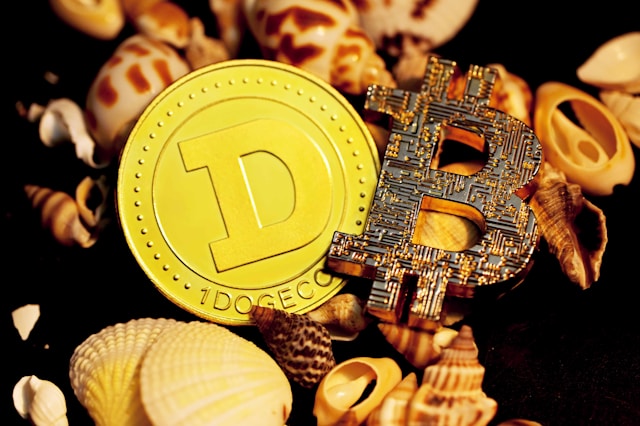Introduction: The Dawn of the Digital Economy
In recent years, the term “crypto” has evolved from tech jargon to a global buzzword. Whether it’s in headlines, investment portfolios, or daily conversations, cryptocurrency has embedded itself into the financial and technological landscapes. Yet for many, the world of digital assets remains complex and intimidating.
Understanding crypto doesn’t require a computer science degree. It starts with recognizing that this is a new form of currency—one that operates independently of banks and borders, driven by cryptographic principles and supported by decentralized networks. This beginner’s guide is designed to illuminate the basics of crypto, helping you navigate this transformative digital frontier with confidence.
What Is Cryptocurrency?
Cryptocurrency, often shortened to crypto, is a type of digital or virtual currency that uses cryptography for security. Unlike traditional currencies issued by governments, cryptocurrencies operate on decentralized networks based on blockchain technology—a secure and transparent digital ledger.
The first and most well-known crypto is Bitcoin, introduced in 2009. Since then, thousands of alternatives, known as altcoins (like Ethereum, Solana, and Litecoin), have emerged. These digital assets can be used for everything from online purchases to long-term investments, and even as a means of participating in digital communities and governance.
How Does Blockchain Technology Work?
At the heart of every crypto lies blockchain—a chain of blocks that records transactions in a secure, immutable way. Each block contains a list of transactions, and once it’s added to the chain, it cannot be altered. This makes blockchain incredibly resistant to fraud and tampering.
Miners or validators confirm and add these blocks to the blockchain. In systems like Bitcoin, this process is called mining and involves solving complex mathematical problems. In others, like Ethereum’s newer model, the process is known as proof-of-stake and requires users to lock up some of their crypto as a guarantee.
Why Is Crypto Gaining Popularity?
Several factors contribute to the growing interest in crypto. One of the biggest is the idea of financial freedom—crypto allows users to bypass traditional financial systems, offering greater control over their assets. Additionally, it provides an opportunity to invest in early-stage technology and benefit from its rapid growth.
Crypto is also appealing because of its potential to serve the unbanked population. In many regions, access to traditional banking is limited, but mobile phones and internet access are increasing. Crypto can act as a financial gateway for millions around the world.
The Different Types of Cryptocurrencies
While Bitcoin remains the flagship of crypto, other digital assets serve diverse functions. Ethereum enables smart contracts, which are self-executing agreements coded into the blockchain. Stablecoins like USDT and USDC are pegged to traditional currencies, offering stability in a volatile market.
Then there are tokens used in decentralized finance (DeFi), non-fungible tokens (NFTs) for digital art and collectibles, and governance tokens that allow users to vote on platform rules. Each type of crypto serves a unique role within the broader digital ecosystem.
How to Buy and Store Crypto Safely
To get started with crypto, you need to set up a digital wallet—a secure app or device that stores your private keys and lets you manage your assets. Wallets come in various forms, including mobile apps, desktop software, and hardware devices for added security.
You can purchase crypto through exchanges like Coinbase, Binance, or Kraken. After verifying your identity and funding your account, you can trade fiat currency (like USD or EUR) for crypto. It’s crucial to use trusted platforms and enable security features like two-factor authentication (2FA).
Risks and Challenges of Investing in Crypto
While the potential rewards can be high, crypto investment is not without risks. Price volatility is a defining feature—values can skyrocket or plummet in a matter of hours. Additionally, the lack of regulation and the presence of scams and fraudulent projects can pose significant threats.
That’s why it’s essential to do thorough research before investing. Understanding project goals, development teams, community support, and market trends can help you make informed decisions. Never invest more than you can afford to lose, and consider diversifying your portfolio.
Regulatory Landscape and the Future of Crypto
Governments and financial institutions are beginning to address the regulatory gray areas of crypto. Some countries, like El Salvador, have embraced crypto as legal tender, while others have imposed strict bans. Meanwhile, many are working on central bank digital currencies (CBDCs) that combine crypto efficiency with centralized oversight.
As regulations evolve, they are likely to bring more legitimacy and safety to the crypto space. However, they could also impact decentralization and user autonomy. Staying informed about regulatory changes is essential for anyone involved in the crypto world.
Crypto and the Broader Financial System
The influence of crypto is no longer limited to niche communities. Financial giants like PayPal, Visa, and Tesla have embraced crypto in various capacities. Institutional investors are exploring blockchain-backed securities, and entire industries are being disrupted by DeFi platforms.
Crypto is also driving innovations in remittances, crowdfunding, and digital identity management. These developments signal that crypto is more than a trend—it’s a paradigm shift in how value is created, stored, and transferred.

Tips for Crypto Beginners
If you’re new to crypto, start slow. Choose a reputable exchange, use a secure wallet, and begin with a small investment. Focus on education—follow crypto news sites, join online communities, and explore learning resources from trusted sources.
Avoid hype-driven decisions and be wary of “get-rich-quick” schemes. Stick to projects with strong fundamentals and clear use cases. Over time, as you gain experience, you can explore more complex aspects of crypto like staking, lending, or yield farming.
Conclusion: Embracing the Digital Asset Revolution
Crypto represents one of the most exciting developments in modern finance. It offers new ways to engage with money, technology, and even community governance. But like any powerful tool, it requires understanding, caution, and respect.
By taking the time to learn the basics and staying up-to-date with the evolving landscape, beginners can confidently participate in the crypto revolution. Whether you’re looking to invest, transact, or innovate, the world of crypto is full of opportunities waiting to be explored.

